Alber Elbaz at Lanvin, Karl Lagerfeld at Chanel, Phoebe Philo at Celine—some designers will forever be linked with the brands they have helmed as creative directors. But did you ever hear about Elbaz at YSL, Michael Kors at Celine or Lagerfeld at Chloé—twice? And while we’re more than familiar with the Alessandro (Michele) who has overseen Gucci’s cult comeback, what about the Alessandra (Facchinetti) who once wore the label’s creative crown?
Just as trends come and go, so too do creative directors and it’s easy to forget that the names we know and love only represent one chapter of a brand’s story. In fact, a deeper delve into the early years of some of fashion’s leading houses throws up some interesting, if not surprising, first forays from some of the industry’s most notable names.
Here, we take a look at the style stewards that fashion forgot.

1 / 25
Michael Kors at Celine
Before Hedi Slimane’s arrival at Celine in 2018, it is almost impossible to imagine anyone besides Phoebe Philo holding the reins of the luxury French fashion house. But Michael Kors did – from 1997 until 2004. The American designer, known for his easy-casual separates, had been appointed by LVMH with the aim of reviving a brand that had been overseen by the same person—founder Céline Vipiana—for more than 50 years. Kors took on the role first as womenswear designer and later creative director. Under his direction, the house borrowed from his all-American aesthetic: laidback luxury, with plenty of camel and cashmere and some glossy, beach-ready looks thrown in—the late Carolyn Bessette-Kennedy played his muse. When he stepped down from the label to focus on his own eponymous line, it would be four more years, plus a couple of short-lived creative directors, before Philo would arrive (she was still busy making her name as Stella McCartney’s successor at Chloé)—hence why the Kors era tends to be overlooked.

2 / 25
Michael Kors at Celine

3 / 25
Michael Kors at Celine

4 / 25
Hannah MacGibbon at Chloé
Following in the footsteps—but, as many have commented, never quite stepping out of the shadow—of her friends Stella McCartney and Phoebe Philo, Central Saint Martins-trained Hannah MacGibbon took the helm at Chloé from 2008 to 2011. Arguably her debut for the spring/summer 2009 season—full of scalloped edges, gently jarring pastels, little shorts, soft volume and romantic ruffles—was a memorable one. It set the agenda for her Chloé girl: feminine, natural and a little undone, with an inclination towards wearable, understated clothes; think Kate Bosworth and Chloë Sevigny.
Yet MacGibbon received mixed reviews during her tenure; leaving behind the fun and frills that had previously made the brand so desirable was potentially her downfall. When Clare Waight Keller (now artistic director of Givenchy) took over in 2011, she was credited with rekindling the original bohemian spirit of the house, as well as introducing a boyish charm. MacGibbon’s contribution, however, should not be discounted—it has been given a fresh, renewed relevance today through the lens of the brand’s current creative director, Natacha Ramsay-Levi.
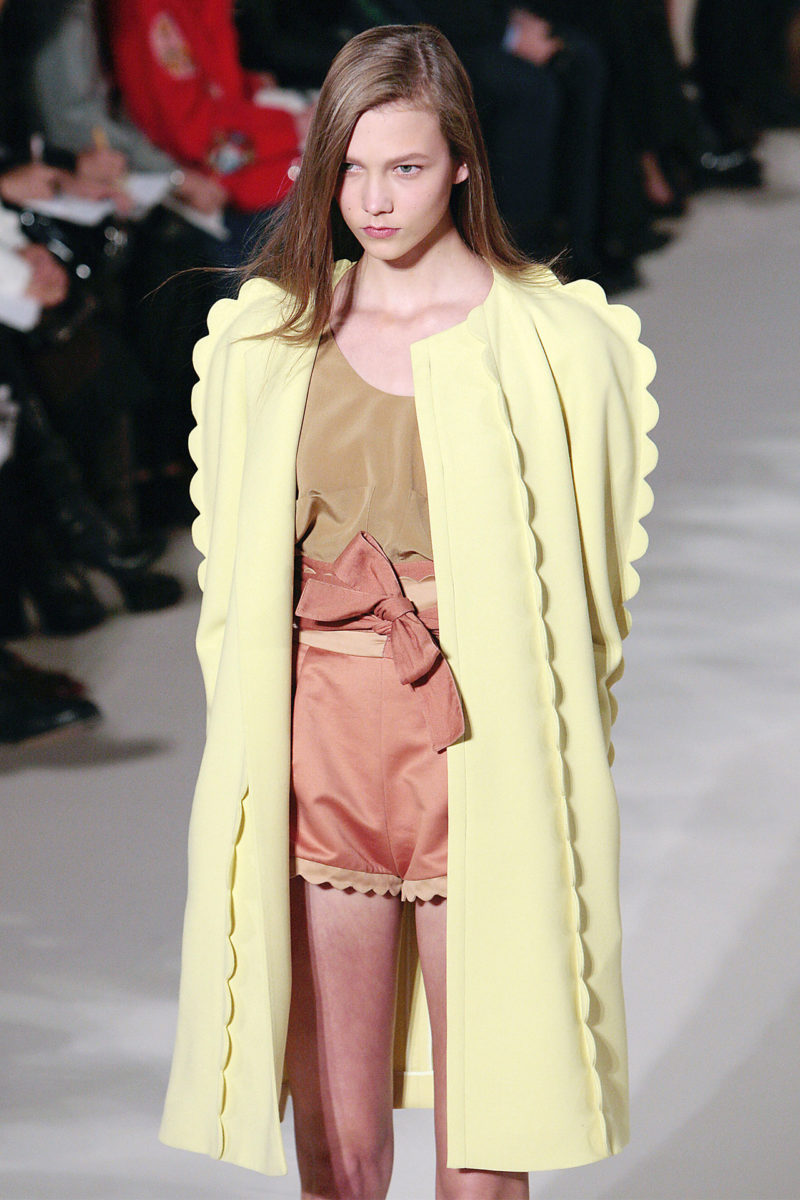
5 / 25
Hannah MacGibbon at Chloé

6 / 25
Hannah MacGibbon at Chloé
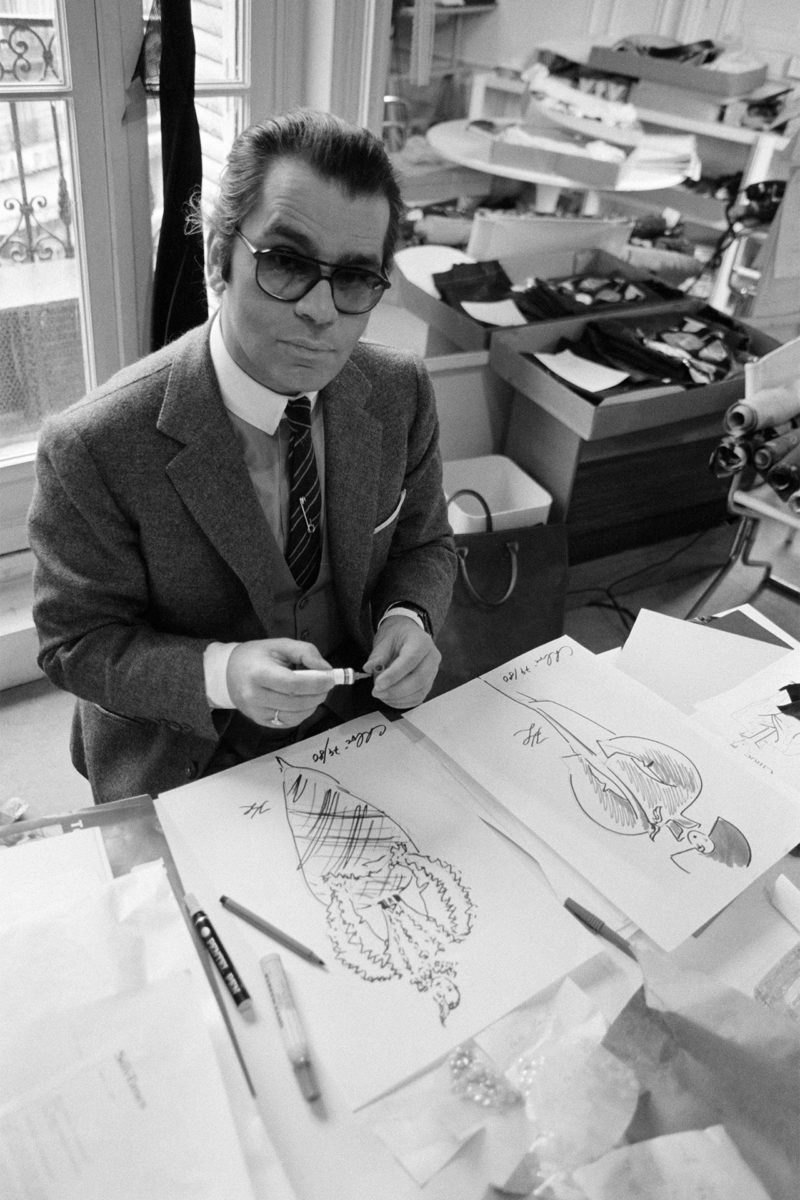
7 / 25
Karl Lagerfeld at Chloé
Founded by Gaby Aghion in 1952, Chloé also twice had Karl Lagerfeld, of Chanel and Fendi fame, as its creative head: in 1974 and 1992. The designer had worked with the house from 1964 and for the next decade would go on to cement its bohemian romance through bold prints on flowing dresses that were confident, fun and liberating. Under his creative eye, the brand reached international success, which put Lagerfeld out there as a serious fashion name.
His designs became the go-to for Jacqueline Kennedy Onassis and Brigitte Bardot. After being appointed at Chanel in 1982, Lagerfeld returned to Chloé again in 1992, though this time to less successful effect. In 1997, aged just 25, Stella McCartney took on the role. Her commercial success with the brand at the turn of the millennium embraced a new, minimalist but sassy phase in fashion—which also coincided with the growth of internet and thus the proliferation of her name at the house.
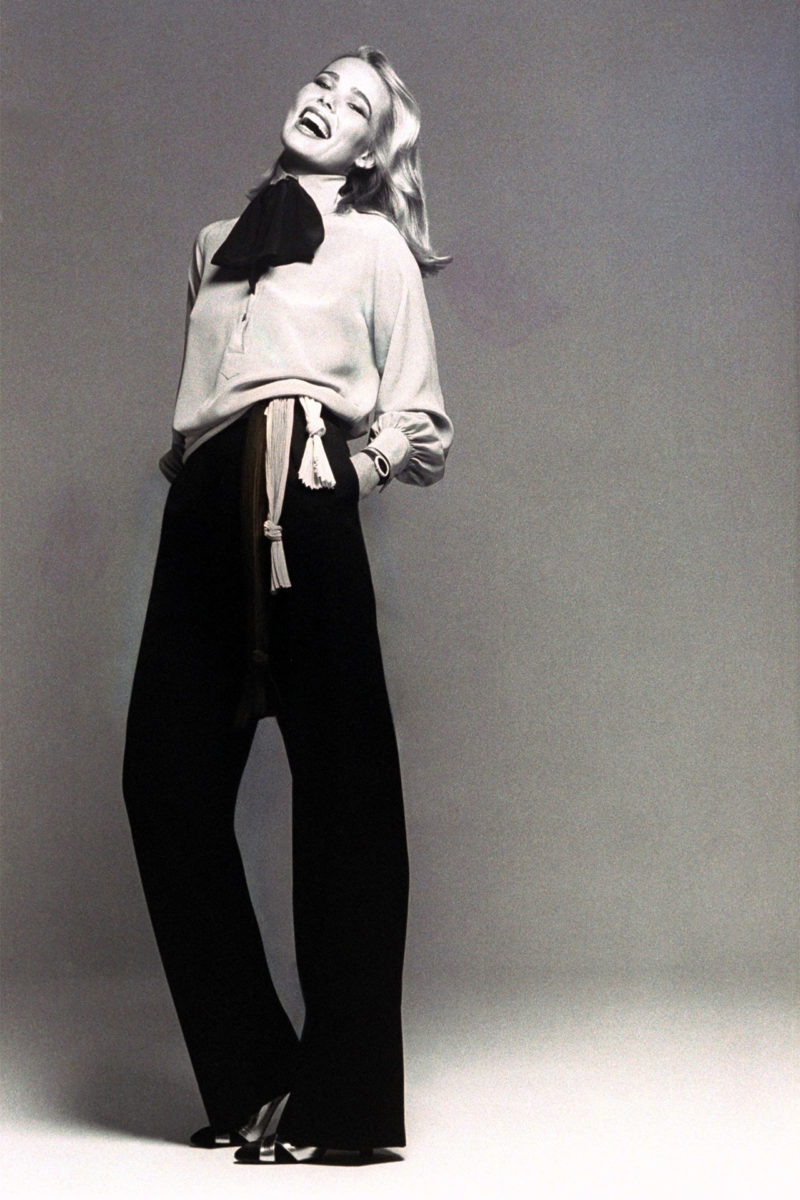
8 / 25
Karl Lagerfeld at Chloé
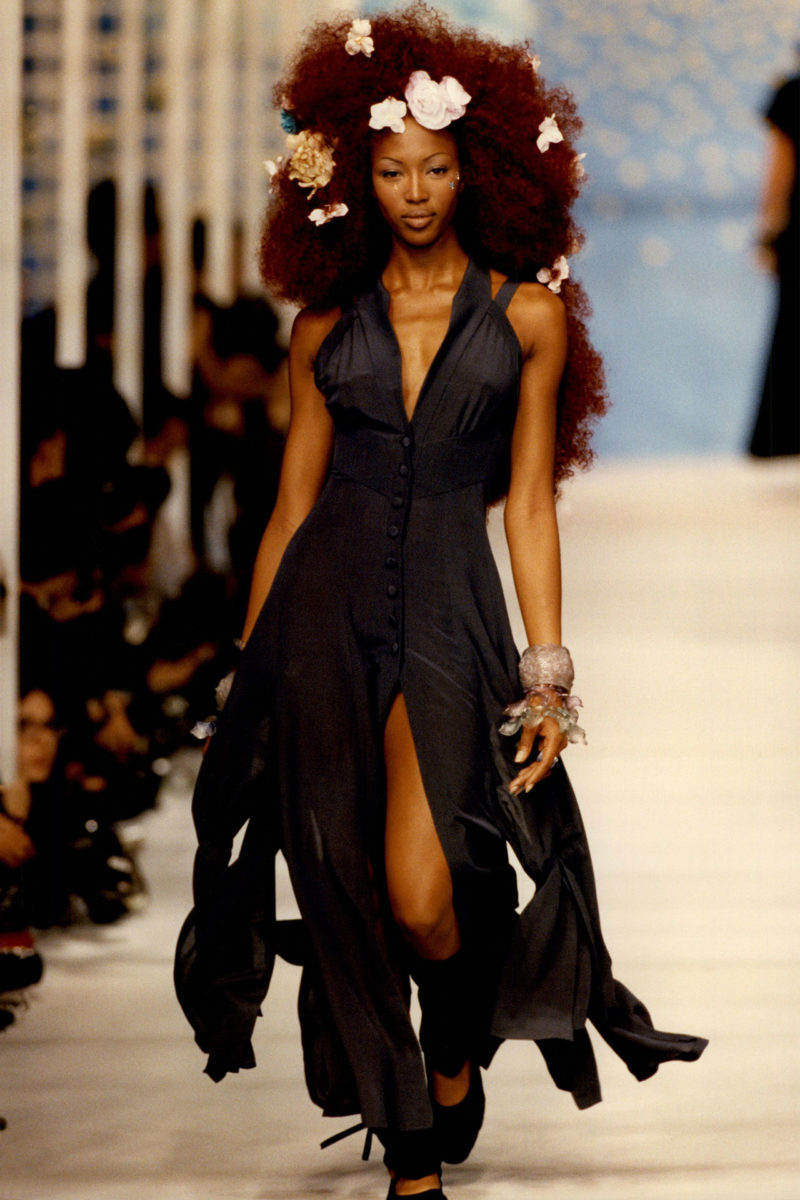
9 / 25
Karl Lagerfeld at Chloé

10 / 25
Alessandra Facchinetti at Gucci and Valentino
Six months ahead of Mr Valentino’s last couture collection before retiring, Alessandra Facchinetti’s name came into the frame as the fashion legend’s successor: news that was met with more than a little apprehension given the Italian designer’s relatively unknown status. At the maison from 2007 until just 2008, her aesthetic wandered too far away from the froth and frou that Valentino’s customers so loved; her decision to opt for 1960s cocoon shapes and clean, prim lines confirmed those initial reservations to be well-founded.
Yet this wasn’t the first time she’d experienced this. Facchinetti worked at Gucci with Tom Ford during the early 1990s and was tapped to take over when he left in 2004. But after just two seasons, some less-than-rave reviews, and a disagreement with management, she was out. In both instances, she was replaced by in-house heads of accessories—Maria Grazia Chiuri and Pierpaolo Piccioli at Valentino, and Frida Giannini at Gucci. Her blink-and-you-missed-it stints, coupled with poor reception, are why we’re not so well versed with her involvement with either house—though some fashion insiders still consider her an overlooked talent.

11 / 25
Alessandra Facchinetti at Gucci and Valentino

12 / 25
Alessandra Facchinetti at Gucci and Valentino
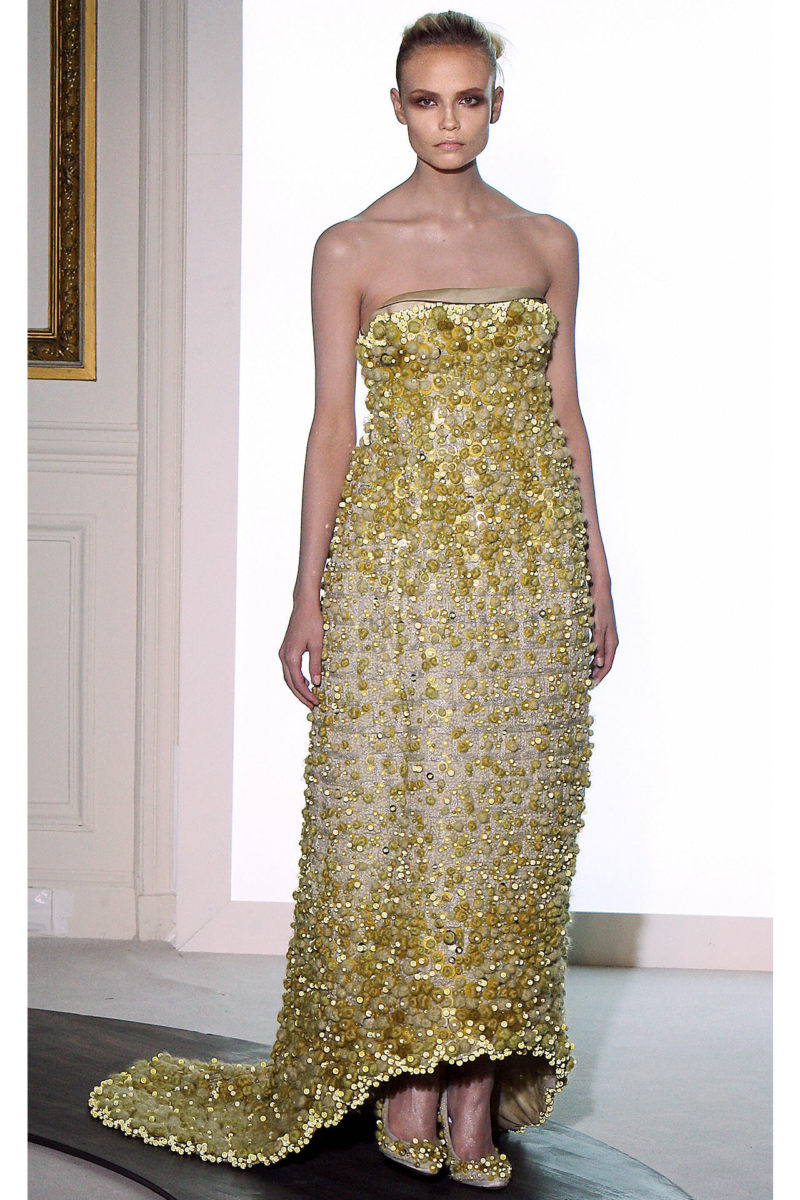
13 / 25
Alessandra Facchinetti at Gucci and Valentino

14 / 25
Marc Bohan at Dior
The longest-serving designer at the house of Dior—working there longer even than Mr Dior himself – Marc Bohan was appointed after the departure of Yves Saint Laurent. He joined the London branch of the company in 1958, becoming creative director in 1961, a role which he would hold for the next three decades. Known for his refined lines and lengthened silhouettes, attention to elegance and bias cuts, he was a favourite with clients including Elizabeth Taylor, Sophia Loren and Grace Kelly.
It was under his tenure that the Miss Dior collection launched in the 1960s (from which Maria Grazia Chiuri, the maison’s current creative director, took inspiration for her autumn/winter 2018 show), the idea being to introduce easy-to-wear and upbeat designs for a younger generation. Dynamic, with a playful sense of humour and a desire to create sophisticated clothes with simplicity, Bohan’s notable highlights included the 1966 collection that featured fur-trimmed coats inspired by the film Dr Zhivago. He also had a penchant for bustles and a great evening gown.

15 / 25
Marc Bohan at Dior

16 / 25
Marc Bohan at Dior

17 / 25
Marc Bohan at Dior
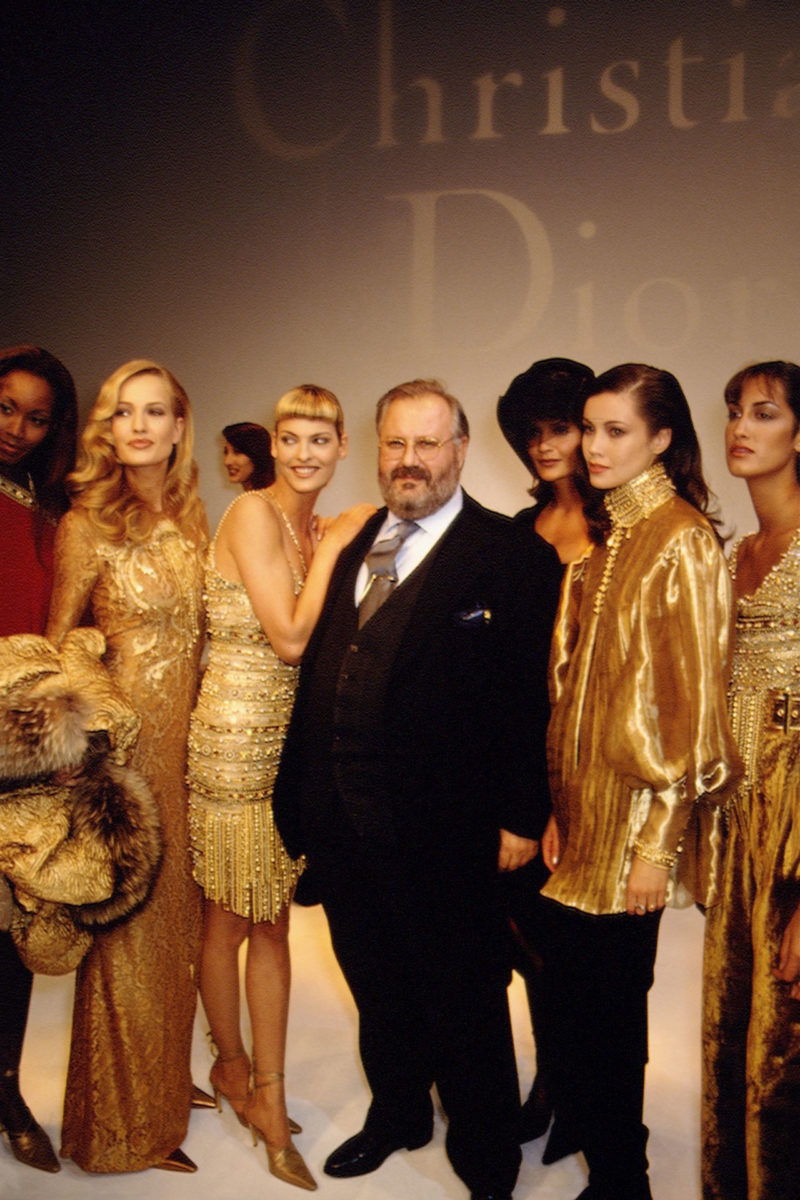
18 / 25
Gianfranco Ferré at Dior
Milanese-born Gianfranco Ferré was the next designer to take the Dior hot seat, in 1989. An architectural designer whose first forays into fashion had come about through jewellery, Ferré is credited with bringing his precise cuts and exaggerated romantic volumes to the house, coinciding with a new mood in fashion, the age of the original supermodels. His flamboyant approach reflected this: among his most iconic designs is the 1992 Palladio dress, an embroidered and pleated white-silk, empire-line column dress.
Appropriate buzzwords for his Dior were extravagant, opulent, bold and colourful—a legacy that John Galliano, who arrived in 1996, would most certainly continue. It was also Ferré who introduced the famous Lady Dior bag, apparently named after the favourite accessory of Diana, Princess of Wales. In much the same way as Bohan’s name doesn’t immediately come to mind when you think of Dior, Ferré’s impact was simply a victim of the lack of internet pre-2000.

19 / 25
Gianfranco Ferré at Dior
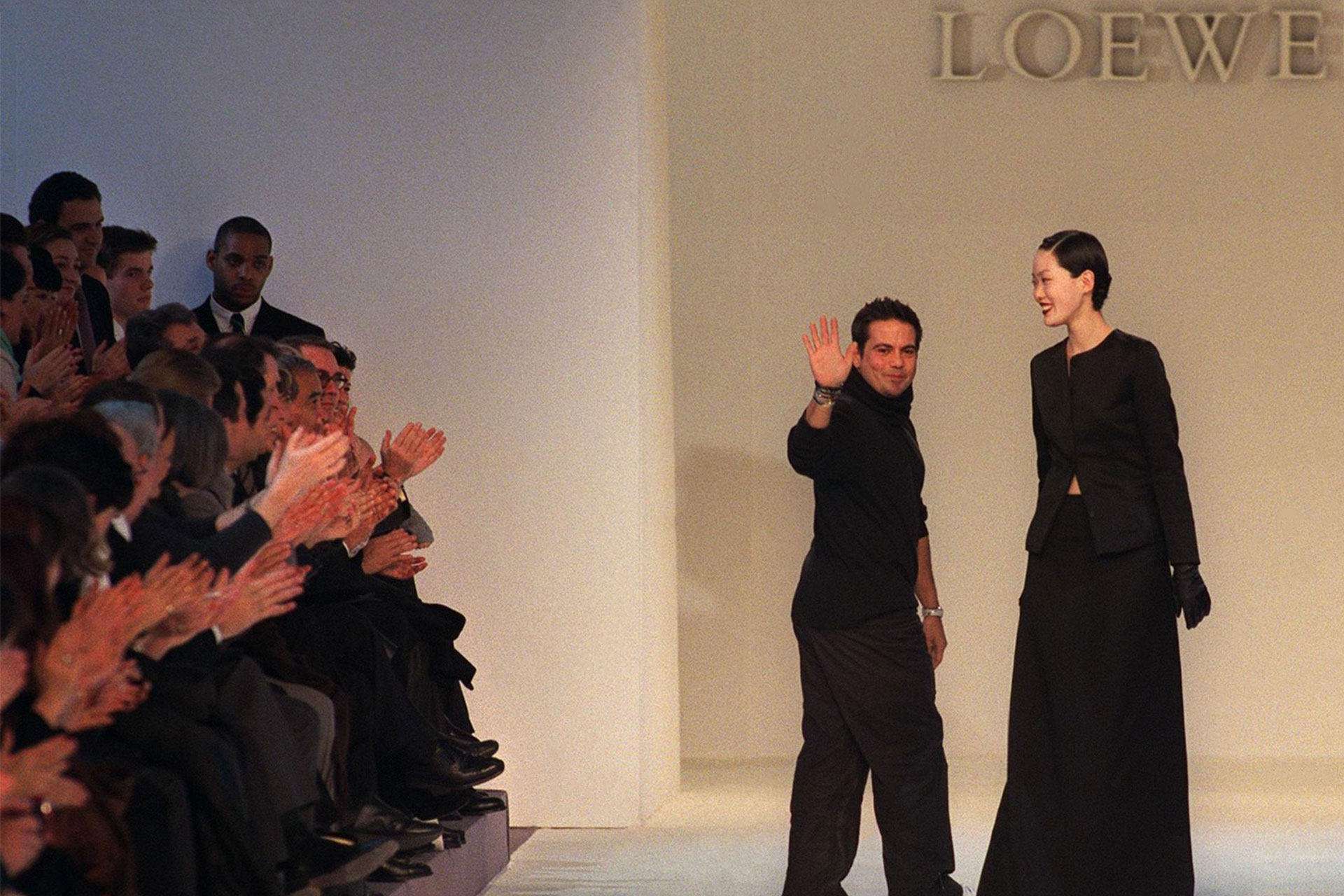
20 / 25
Narciso Rodriguez at Loewe
From 1998 to 2001, long before Jonathan Anderson’s name became synonymous with Loewe, American-Cuban designer Narciso Rodriguez enjoyed time at the LVMH-acquired luxury Spanish house, which was founded in 1846 by a group of leather craftsmen. The appointment came off the back of a string of successful career highlights for the Parsons graduate, who was known for his graphic lines and precision cuts.
Pre-Loewe, Rodriguez, was picked as a relative unknown to design Carolyn Bessette’s wedding dress for her 1996 marriage to John F Kennedy Jr—a sign of things to come, perhaps, for by 2008 he was dressing Michelle Obama in his own-label creations. During his time at Loewe, he was noted for combining the house’s strong leather heritage with his own bold aesthetic—creating some beautiful pieces in the process, but never going quite as far as the statement-making Anderson, who has since made the brand quirky but compelling.
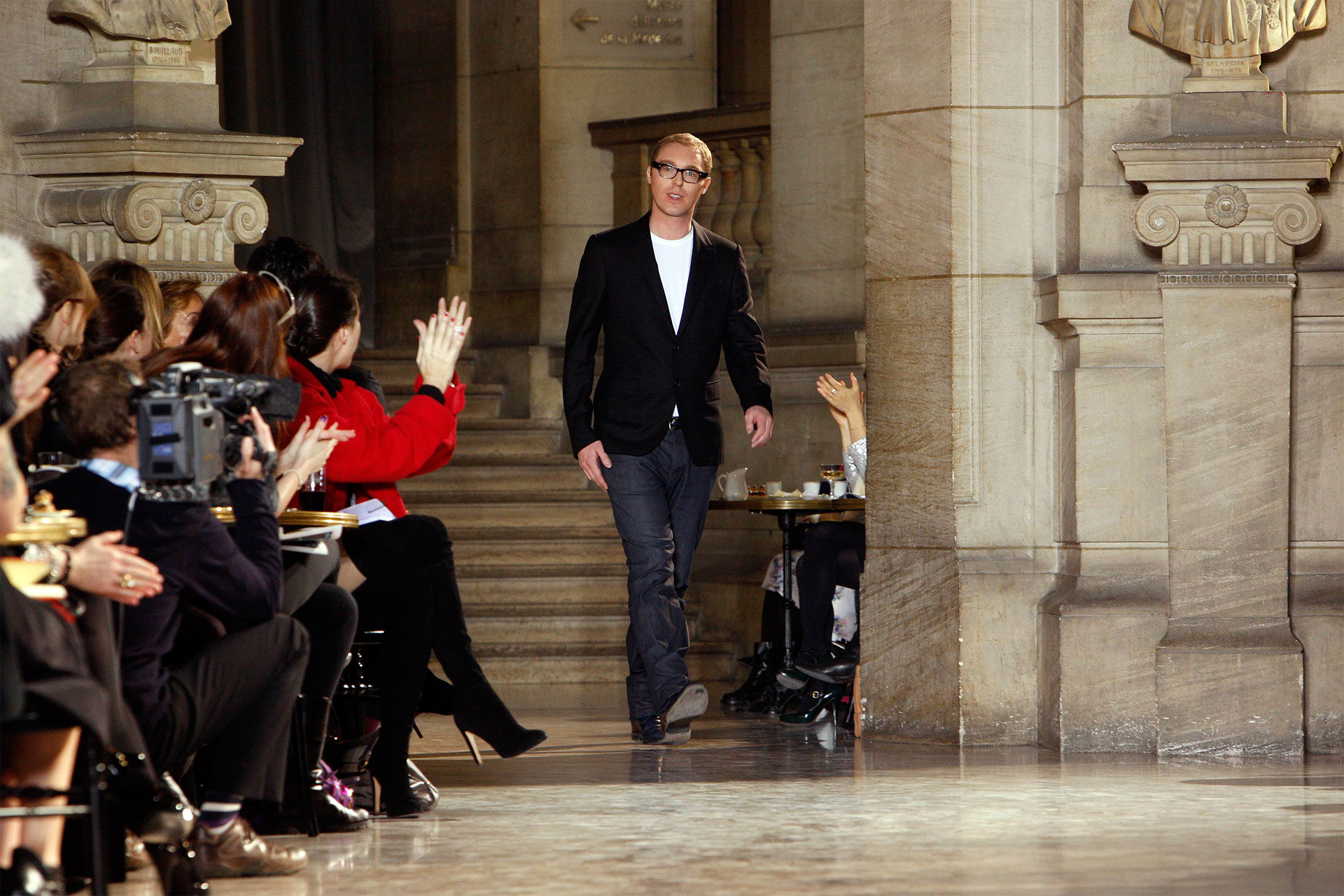
21 / 25
Stuart Vevers at Loewe
Rodriguez wasn’t the only one to take on Loewe. Brit boy Stuart Vevers, part of London’s pre-nu-rave cool gang (Giles Deacon et al), joined the house in 2007. Charged with revamping the Spanish heritage brand and putting it into the spotlight, Vevers did manage to make inroads to raise the profile, counting the likes of Sienna Miller, Madonna, Victoria Beckham and Gisele Bündchen as fans, but his designs were led more by wavering seasonal trends than any definable signatures. And, notably, his previous stint at Mulberry, where he was creative director from 2005 had been more successful. He would step down in 2013, succeeded by Jonathan Anderson, who has since amped up the artsy angle and craft heritage. Vevers, meanwhile, went on to Coach, where he’s since been garnering great reviews.
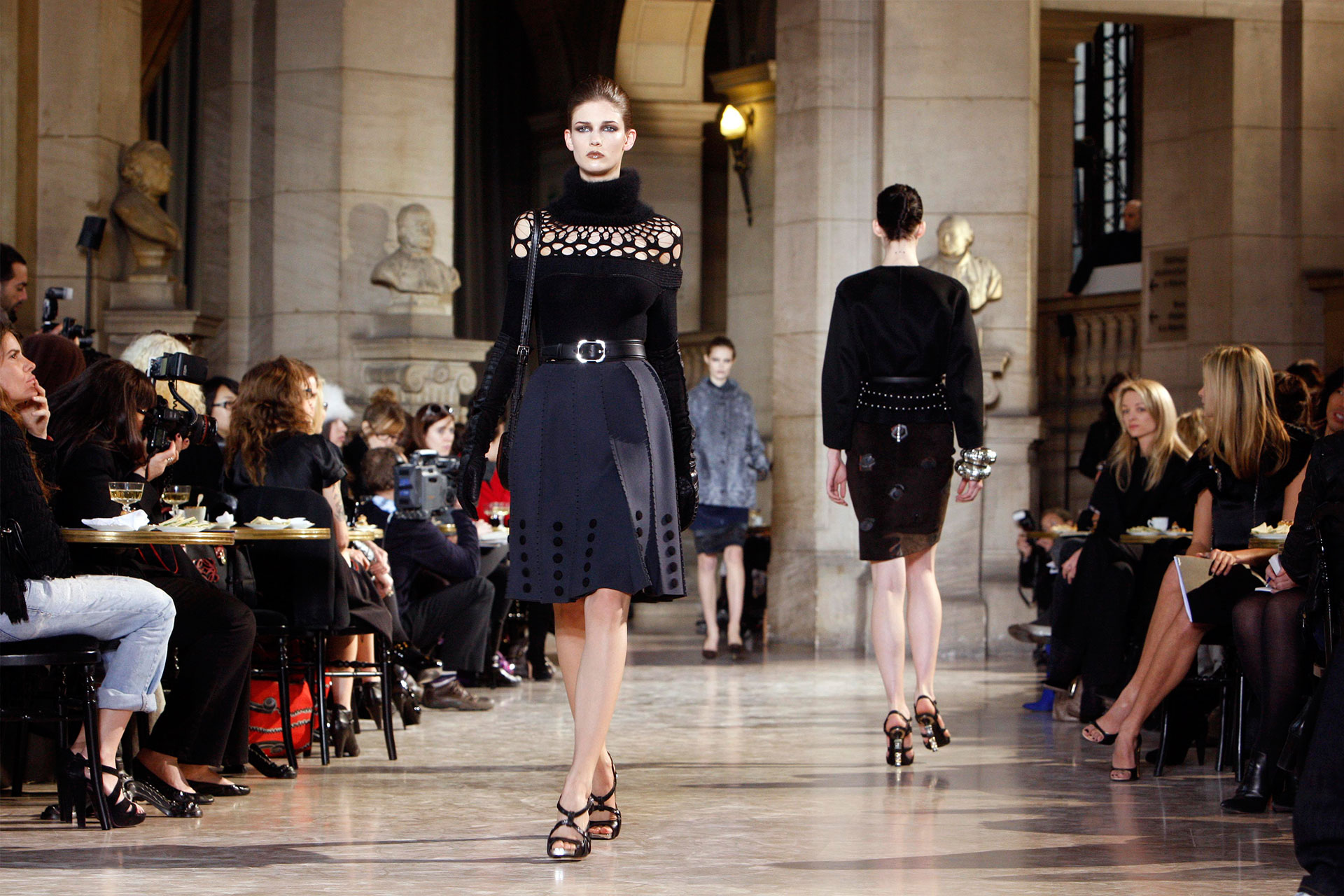
22 / 25
Stuart Vevers at Loewe

23 / 25
Alber Elbaz at Yves Saint Laurent
When we hear the name Alber Elbaz, it’s not surprising to automatically think of him as Lanvin’s charming and witty creative director. Yet the Moroccan designer’s first notable artistic directorship was actually for Yves Saint Laurent’s Rive Gauche line in 1999. The designer had joined the house from Guy Laroche, another often-forgotten creative director role he’d held for just over a year.
Succeeding Mr Laurent himself, Elbaz was credited with acknowledging and attempting to modernise the YSL signature codes, including Le Smoking tuxedo—but following in the footsteps of the namesake designer was always going to be tough, and he received a series of yo-yo reviews. Of course, Catherine Deneuve, a lifelong YSL muse and supporter, was still front row at his shows, but soon it would be Tom Ford and not Elbaz she’d be clapping for at the collection’s end. The former Gucci mogul took the helm of the house from 2000 to 2004, leaving a lasting impression that would erase any that Elbaz might have made before him.
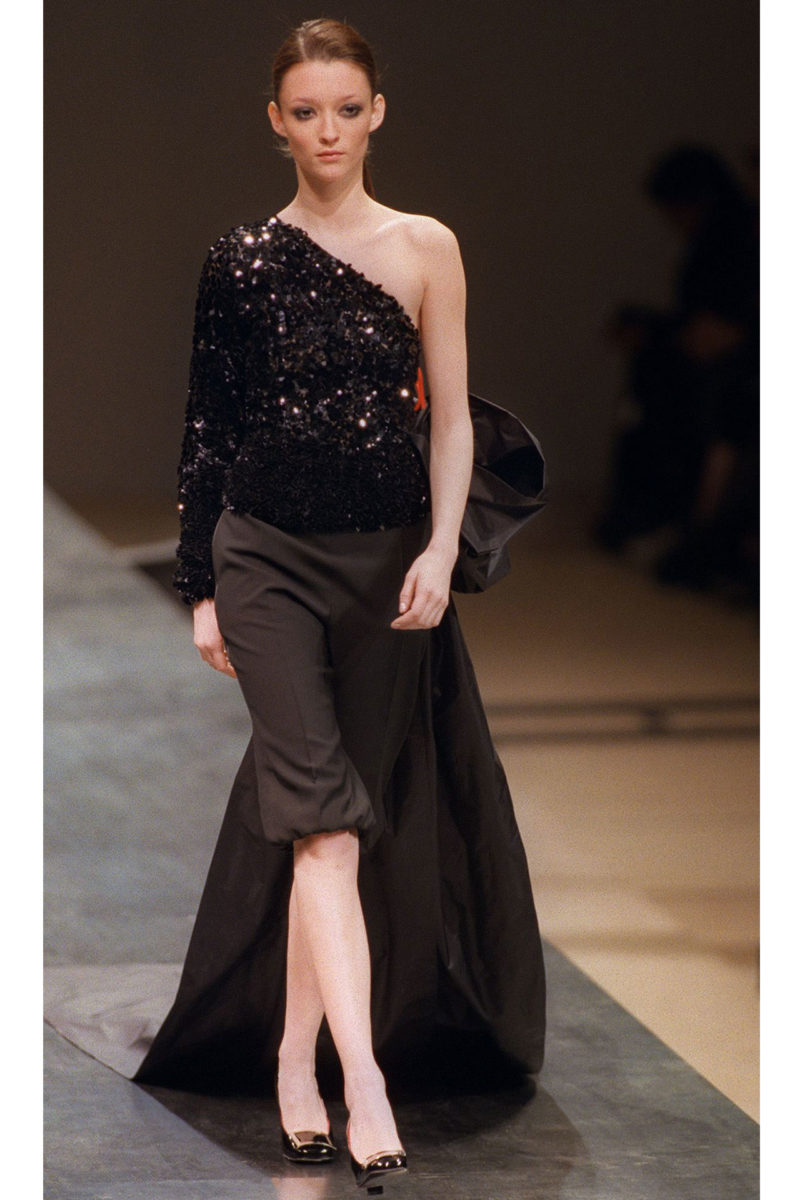
24 / 25
Alber Elbaz at Yves Saint Laurent

25 / 25





